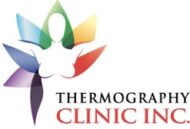Before a Lump Develops
 Alexander Mostovoy, D.H.M.S.,BCCT
Alexander Mostovoy, D.H.M.S.,BCCT
Board Certified Clinical Thermographer
The statistics today are alarming: one in eight women will develop breast cancer. Each woman must choose between lumpectomy, mastectomy, radiation or chemotherapy in deciding how best to respond to her situation. With no cure for breast cancer in sight, everyone agrees that early detection is crucial.
Presently, breast self-examination and regular mammograms are the prescribed tools for early detection. Self-examination is an easy, no-cost way to monitor breast health and detect changes in the early stages. Mammograms provide a look inside the breast tissue and can often detect and diagnose anatomical abnormalities – such as lumps – already existing in the breast.
But lumps and other breast abnormalities generally don’t appear overnight. Long before they are discovered via film or fingers, their cellular contributors are hard at work. Cancer cells require a supply of blood in order to flourish and survive. Being aggressive, they create their own pathways to obtain this nourishment. Self-examination and mammograms cannot detect this invisible, early-cellular process, which usually occurs in breast tissue from five to ten years before even the slightest growth of a lump.
The science of breast thermography has opened the door to the earliest assessment for abnormalities in breast tissue that Western medicine has ever known. Thermography uses infrared imaging to generate highly detailed digital pictures. The military began using infrared imaging in the 1950’s. Valued for its ability to detect and pinpoint areas of heat and movement, this technology provided a way for the military to “see’ what and where the eye or other surveillance techniques couldn’t -it is also known as “night vision”.
While the FDA has approved breast thermography since 1982, the greatest developments in this field have emerged in just the last few years with the advent of digital photography and high-resolution digital imaging. What is extraordinary about these intricate images is that they are able to display patterns of heat and vascularity within the tissue itself. Patterns of heat and vascularity can reveal the earliest indications of disease while they are still in the formative stages. Thermography can also detect the presence of heat from an infectious process or from a pre-existing anatomical abnormality (i.e. lump) in the breast. Thermography is also the best way to detect soft tissue trauma or damage. It is a non-invasive, radiation-free, safe and painless process.
The January 2003 issue of the American Journal of Radiology presented the results of a four-year clinical trial that tested thermographic imaging efficacy in distinguishing between benign and malignant lesions on patients who were scheduled for biopsies. Researchers concluded that “infrared imaging is an economic and safe modality that provides physiological data about a lesion. The physiological view provided by infrared imaging complements the anatomical view provided by mammography… Thus, this … could be a valuable addition to the physician’s armamentarium of diagnostic tools.”
Breast thermography is not a stand-alone tool in the screening and diagnosis of breast cancer. It is adjunctive. We cannot ignore the tremendous role of thermography as an early-risk indicator or as a monitor of treatment. When a thermogram is positive, a closer look at the patient’s diet, exposure to environmental pollution, toxins and lifestyle is in order. Clinical blood work, in addition to ultrasound and mammography, is essential. When mammography and blood work is negative or equivocal, thermographic monitoring on a quarterly to semi-annual basis should be performed in those patients with suspicious thermograms.
Changes in tumor angiogenesis can be evaluated and other procedures can be ordered to aid in the earliest possible diagnosis. Thermography is non-ionizing and safe – there is no reason to simply “wait and see” any longer. It is at this stage that a major decision must be made. We can no longer be passive but must become proactive with our health. The “wait and see’ attitude due to a negative or equivocal mammogram is no longer acceptable. With a more universal and non-political approach, thermal imaging can become a valuable early-detection tool that is indispensable to a patient’s healthcare.
We must use every means possible to detect cancer where there is the greatest chance for survival. Proper use of breast self-exams, physician exams, thermography, and mammography together provide the earliest detection system available to date. If treated in the earliest stages, cure rates greater than 95% are possible.
